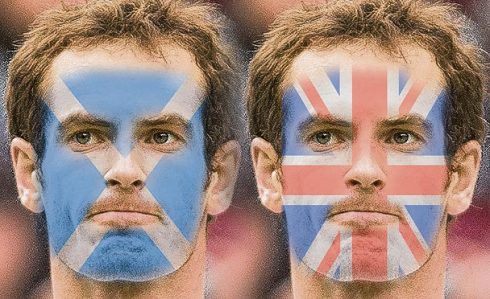After receiving criticism and no shortage of Twitter abuse, Great Britain‘s Andy Murray this week apologised for tweeting his support for Alex Salmond’s now defeated ‘Yes’ campaign ahead of the Scottish Referendum vote, specifically the ‘way it was worded’ where he openly criticised the successful Better Together campaign.
But after the almost inevitable fallout driven largely by the British sporting public and media south of the border who feel betrayed after years supporting Murray at Wimbledon, during Davis Cup matches and at two Olympics, should he have got involved in the first place?
The quick-fire would be no as surely Murray, with a history of being quoted (or misquoted) making anti-English remarks and now a resident of leafy Walton-on-Thames, didn’t want to risk alienating and losing the support of the British sporting public. Hard won support after initially being caricatured as a screaming, on court tantrum queen and previous auld enemy baiting episodes, which include joking about wearing the shirt of England opponents Paraguay during the 2006 World Cup and claiming he would always support ‘anyone but England’ at the same tournament.
But as a passionate Scot – a survivor of the horrific Dunblane disaster no less – Murray is well entitled to an opinion about the future of the country of his birth. But with emotions and tensions running high on both sides of the border as voting D-Day approached, Murray was ill-advised to keep quiet for so long, only to tweet his support and take an open swipe at the ‘No’ campaign on the morning of the vote. Combining my day job working in PR and being a sports fan, I know what I would have advised him.
Which begs the question, did Murray take it upon himself to tweet, was he cajoled into doing so as a last-ditch attempt to sway voters or was his the joker card the ‘Yes’ campaign always planned to play on the morning of the vote? However it came about, Murray has surely learnt a valuable lesson about the potential toxic combination of sporting celebrities, politics and social media and will in future likely follow the more world-wise lead of Sir Chris Hoy (and the Queen) in staying diplomatically neutral.

